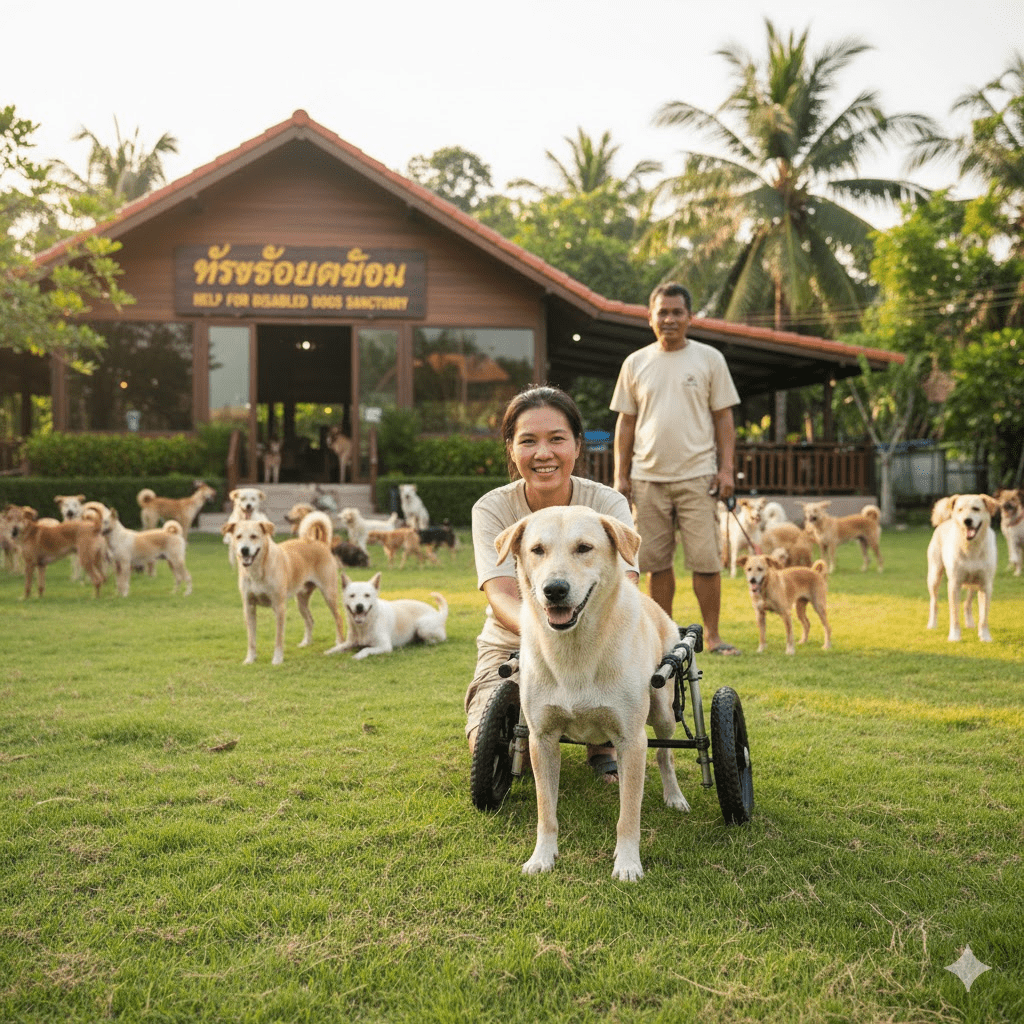The dusty roads of Doi Saket, Chiang Mai, bore silent witness to a heartbreaking incident that unfolded with shocking speed. A lone stray dog, a familiar fixture near Rajamangala University of Technology Lanna, lay resting by the roadside, a picture of quiet existence. Without warning, this tranquility was shattered. A car, moving at an indifferent pace, veered and struck the unsuspecting animal. The collision was brutal, trapping the dog beneath its wheels. A horrified bystander captured the entire ordeal on video, a chilling testament to the driver’s immediate departure, leaving the injured creature to whimper in agony, dragging itself away from the scene of its trauma. The raw footage, circulated with desperation, ignited a spark of outrage and a fervent plea for help. The local community page swiftly picked up the distress call, broadcasting the video and the dog’s plight, hoping against hope that compassion would prevail where indifference had reigned.

The digital outcry proved potent. As the video spread like wildfire across social media, shared by countless concerned citizens, the identity of the vehicle’s corporate owner was quickly established. In an unexpected turn, the company, once alerted to the devastating incident involving their employee, did not shy away. Instead, they stepped forward, expressing profound regret and making an unequivocal commitment: they would take full responsibility for the dog’s medical expenses, surgery, and subsequent care. This corporate accountability was swiftly followed by a personal apology from the driver, who also pledged to assume responsibility for the tragic event. What began as an act of apparent negligence was now moving towards an unforeseen resolution, offering a glimmer of hope for the injured animal.

Despite the promising financial support, a new, daunting challenge emerged. The dog’s injuries were severe, hinting at a future possibly marred by disability. The thought of a life requiring a wheelchair, assistance with eating, and aid for basic needs like toileting, cast a long shadow. The initial good Samaritans found themselves unable to commit to such intensive, long-term care. The very act of saving the dog had opened up a complex ethical dilemma: who would provide the sustained, specialized attention this animal would undeniably need? The question hung heavy in the air, transforming the narrative from one of immediate rescue to a quest for a permanent, compassionate solution.

In response to this looming challenge, a new strategy was proposed: a collaborative effort between the company and local animal welfare organizations. The idea was to leverage the company’s financial commitment to secure a place for the dog in a specialized shelter or foundation, one equipped to handle the unique needs of a disabled animal. This pivot from individual care to institutional support marked another unexpected turn in the dog’s story, transforming a private tragedy into a public mission. The community’s gratitude towards the company for its swift and decisive action was immense, but everyone understood that the true test lay in securing a future filled with dignity and consistent care for an animal whose life had been irrevocably altered.







